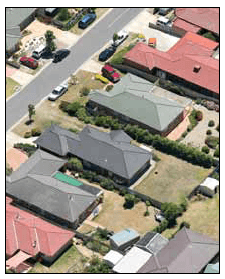
As published in Your Investment Property Magazine, May 2012
Written by Hotspotcentral.com.au’s research analyst.
Hotspotcentral.com.au’s research analyst shows how you can size up a market within minutes.
A senior executive at one of the Big Four banks asked me for a review of the Southport unit market in September 2011 because his sister had bought there a few years earlier. She wasn’t happy with where prices had gone and didn’t know whether to sell or hold.

I didn’t even know where Southport was at the time and I didn’t have to either – a few minutes spent examining the DSR (Demand to Supply Ratio) BoomScore and its indicators gave me a clear picture. And it’s really quite easy once you know how to interpret them.
The indicators of the DSR BoomScore are available through our free property rsearch web app, Boomtown, at boomapp.com.au. And for more on the DSR BoomScore, see dsrscore.com.au. So let’s go through those indicators of September 2011 for Southport units and learn how to appraise the state of any market in Australia within a few minutes.
SOUTHPORT, OLD, 4215 UNITS
>>> Demand to Supply Ratio (DSR) BoomScore

The first thing I noticed about Southport units was that the DSR BoomScore was 11 out of 48 for houses (which is “poor”) and only eight for units (which is “very poor”). Our executive’s sister bought a town house, which being strata titled, falls under the unit category. A DSR BoomScore of eight at that time put her town house in the 98th percentile of over 6,000 markets. In other words, it was one of the worst markets in Australia.
>>> Statistical Reliability (SR)
But is the DSR BoomScore reliable? Well the score can actually get a bit sketchy if certain data isn’t available or is of poor quality. Fortunately, the quality of information is also gauged so you can know what importance to apply to the DSR BoomScore figure. The Statistical Reliability or SR for short is a measure of this reliability and it was 7.5 out of a maximum of 8. So the data can be considered as very reliable.
Why does the DSR BoomScore consider this market to be so bad? As you’ve probably already read if you’re a subscriber of this magazine, the DSR BoomScore is made up of a number of indicators. Let’s examine each indicator for Southport in detail.
>>> Days on Market (DOM)
Units were spending a long time on the market in Southport. It was taking 156 days on average to sell a unit. A reasonable market would have a sale within about 90 days. This is not such a terribly high figure for DOM. I’ve seen markets with DOM of over 400. A high DOM means buyers are being very choosey and taking their time to have a good long look at what is available. They’re under no pressure to make up their minds quickly.
>>> Discounting
The average difference between the original asking price and the eventual sale price or “discount” as we call it was 12%. This is a very high rate of discounting. Vendors were dropping their asking price considerably in order to get a sale. They were highly negotiable. This happens in markets that have slowed considerably. It is a necessary response by vendors to get a sale across the line. In fact, perhaps the DOM would be higher than 156 if the discounting was lower.
Already we’re seeing a market in trouble and we’ve only examined two indicators.
>>> Auction Clearance Rate (ACR)
The ACR was pretty bad at 34%. This means that about one in three auctions resulted in a sale. Buyers turned their noses up at the other two-thirds. But I couldn’t believe that auctions were even taking place in this market. Auctions are excellent for sellers when there is strong demand because it gets all the interested parties clamouring over each other trying to get the property. This is not very clever marketing for a climate heavily favouring buyers.
Then again, it may not be entirely the fault of the agents. Some sellers like auctions because it’s all over and done with on one day. But that’s only if someone turns up and bids. If not, you’ve wasted a lot of money in advertising. If I were selling in such a market, I would definitely not do so via an auction. But if the vendor insists, what option does the agent have?
>>> Proportion of renters
At 46% the proportion of renters in the market is quite high. This means there’ll be strong competition among landlords to lure tenants if vacancy becomes an issue. And let’s have a look at vacancy…
>>> Vacancy
The vacancy was 3.13%. This is not so bad. The long term average for Australia is about 3%. But elsewhere in the Aussie market at that time, vacancy rates were around 2%. So this is still comparatively poor. Combined with higher rates of renters, this could be an issue but is not alarming.
If I was the owner of a property in this market AND I decided to keep the property, I would look to renew the lease for as long as possible and I’d do so as soon as possible. I wouldn’t let the current lease get anywhere near its expiry date before offering the tenant something solid and attractive. And I’d be even more urgent if the lease was periodical – (meaning the tenant can up and leave with only a few weeks’ notice).
I’d offer the tenant a lease of something like two years at a rate slightly above their current rent. The tenant would consider the security attractive and therefore worth the extra money possibly not knowing the state of the market is actually in their favour. But this is only if I had decided to keep the property.
The idea here is to reduce the risk of an extended vacancy. The other stats indicate that this may happen in the not too distant future. And even if they don’t, without cash flow, a property falling in value or even holding ground is a pain in the bank balance.
If I were looking to sell though, I wouldn’t renew the lease. And so far from what we’ve seen, I would definitely be looking to sell.
>>> Yield
The yield was only a little lower than what I’d expect for a unit around the same time elsewhere in the country. It was at 4.41%. With a standard 80% loan to value ratio this makes the property negatively geared. Without some very high depreciation benefits a low income earner may be under pressure to hold a property like this.
>>> Stock on Market % (SOM)
The number of properties for sale represented 5.34% of the number of units in the location in total. This is classic over-supply. A normal figure would be 2% and you’d want it to be less than 1% ideally. It’s possible that a bunch of developers released some product at the same time and there is simply too much. This is over-supply.
>>> Online Search Interest (OSI)
The number of people searching online for property to buy in Southport compared to the number of properties listed for sale is quite low at 5.2 people for each property over the course of a month. Double this figure would be only just reasonable. A decent market would be identified by more than 30 people looking for every one property listed – a 30 to 1 ratio. At 5.2 it’s quite bad.
>>> Southport Conclusion
My response to the NAB executive was to recommend his sister sell the property and then re-invest the proceeds in a high DSR BoomScore location.
Long term, Southport will recover. It will have its growth spurt sometime in the future. But whether that takes three years, five or even more is not known. You don’t want to be paying interest on a mortgage all that time while watching other locations boom.
MONTROSE, VIC, 3765, HOUSES

Let’s look at something a little more positive and a little more recent. I picked Montrose, Victoria, 3765, houses from the January 2012 DSR BoomScore data because this market has a high DSR BoomScore. Let’s examine the indicators of the DSR BoomScore to see if we can understand the demand and supply of property in this market.
Again I had no idea where Montrose was except I knew it was in Victoria and probably nowhere near the CBD given the high post code number. But Montrose houses had a high DSR BoomScore, so I decided to examine it in a little more detail. For those of you who know Montrose well and are familiar with the market for houses in January 2012, see how close the following appraisal is.
>>> Demand to Supply Ratio (DSR) BoomScore
The DSR BoomScore for houses was 37 out of 48, which places it in the “very good” category. In fact it is in the first percentile of nearly 6,000 markets scored by DSR BoomScore for that month, which is why I picked it for analysis of a positive market for investors.
>>> Statistical Reliability (SR)
The SR was 7.7, which is excellent, given the highest SR possible is 8. So we can have confidence that the DSR BoomScore is an accurate measure of this market’s demand-supply imbalance.
Already this is enough to flag this market as having potential and it’s only taken a few seconds. But let’s have a closer look.
>>> Days on Market (DOM)
The DOM was 57. That’s a little less than two months. A normal figure would be about three months. So buyers were being forced to make quick decisions. This is an excellent indicator of good demand.
>>> Discounting
The average discount from the original asking price was 6%. This is normal. It doesn’t reflect a seriously hot market, but is certainly healthy.
>>> Auction Clearance Rate (ACR)
The ACR was quite good at 80%. This means that only one in four auctions did not result in a sale. I can imagine some of those auctions having some fierce bidding. If the auction volume was high, I’ll bet some bidders attended multiple auctions – possibly getting frustrated at not being able to get their dream home or even their second preference.
>>> Proportion of renters
The proportion of renters was only 12%, which is excellent. This means that there are few landlords in the area. If it is a popular place to live, then there should be strong demand from tenants with such a small number of rentals within the market. Vacancy is unlikely to be an issue, but let’s see what that was.
>>> Vacancy
The vacancy was 0.72%. This is an indication of a very tight rental market. Anywhere below 3% is in the better-than-average range. And less than 2% is considered tight. But this is less than 1%.
I would expect rents to climb in a market like this. If I were a landlord in this market, I’d be reluctant to extend a tenant’s lease by more than six months without requesting a much higher rent. In six months’ time rents may have gone up by 10% or more. You don’t want to wait 12 months before you can cash in on that. So what about the yield…
>>> Yield
The yield was 4.38%, which is perfectly normal for houses. But it doesn’t yet reflect the strong demand from tenants. So I’d expect some good rental growth in the future.
>>> Stock on Market % (SOM)
The number of properties for sale represented 0.71% of the number of houses in the location in total. This is quite tight. With little to choose from, buyers will be tempted to make stronger offers and pay slightly above current market rates, gradually pushing prices higher. A more normal SOM% figure would be above 1%.
>>> Online Search Interest (OSI)
The number of people searching online for property compared to the number of properties listed for sale is quite high at 95.6. Remember that Southport units had an OSI of only 5.2. So you can see the staggering difference. A normal figure might be around 25. This shows a lot of interest from buyers.
CONCLUSION

As you can see, the DSR BoomScore statistics give a very clear indication of where the market is at from a supply and demand situation. It doesn’t matter if the market has a good name, or nice views, or is in a CBD or is regional. The most important thing for an investor to know is whether they’ll get a good return on their investment and what the risks are.
Armed with this data you can see how liberating research can become. You can research markets across the entire country without bias and do it within minutes. You can know the current state of any market better than locals because you’ll be looking at the market from an investor’s perspective.
Your Investment Property Magazine
May 2012

